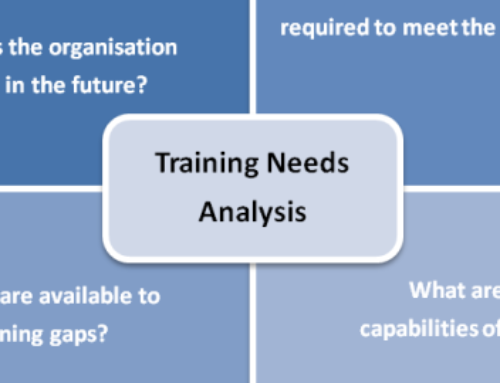If you’re looking for a way to improve your workflow and streamline the design and development process of your eLearning course, then you may want to think about action mapping. In this article, I’ll share the basics of action mapping in eLearning, and I’ll also walk you through how to integrate it into your eLearning course. by
A Guide On Action Mapping in eLearning
eLearning professionals are always looking for ways to keep the eLearning course design process well organized and as productive as possible, even if this may seem like a next to impossible feat in some cases. The great news is that there is a technique you can employ to identify your learning goals and to develop interactive eLearning experiences that go beyond mere virtual presentations. This technique is known as Action Mapping.
The Basics of Action Mapping in eLearning
Action mapping in eLearning helps you to develop eLearning experiences that are engaging, effective, and entertaining for your audience by focusing on what they need to achieve rather than the information that they need to absorb. While content is key in all eLearning courses, those that have been designed using action mapping prevent cognitive overload and boost knowledge retention by concentrating on the behaviors that need to be modified or enforced. Here are a few of the most important ideas behind action mapping:
- Measurable goals.
Depending upon what behaviors need to be changed or on the learning goals that need to be achieved, some measurement method must be in place to determine the learners’ progress. For example, while many eLearning courses will set a goal of “teaching sales employees about organization’s new product”, an eLearning course action mapping goal might be more along the lines of “to boost sales of the new product by 25% in the first quarter”. This goal is measurable, therefore you will be able to determine if the sales goals have been met. - Immersive learning activities.
When creating the action mapping of your eLearning course, you should also focus on activities that are immersive and interactive. Each learning activity should be aimed at achieving the learning goals or changing the behavior by immersing your learners into a real world situation or by encouraging them to solve a problem that they might encounter on-the-job. By using action mapping in eLearning, you can mimic the real life activities of your learners, which provides a memorable eLearning experience rather than just a one-dimensional eLearning course. - Learning from mistakes.
One of the key elements of action mapping in eLearning is that it allows (and even encourages) learners to make mistakes that they can learn from. eLearning Scenarios and simulations give them the chance to engage in the eLearning process without any real world risk, so that they are able to determine the consequences of their decisions and perfect their behaviors and thinking processes before stepping out into the real world.
The primary goal of action mapping in eLearning is to allow eLearning professionals to target a specific behavior or goal that will always be measurable. By focusing on the end goal rather than all of the information that needs to be absorbed, learning becomes exciting, engaging, and fun for your learners.
7 Tips To Integrate Action Mapping in eLearning Courses
- Meet with the client to identify goals.
The first step in the action mapping process is meeting with your client to set clear goals or to decide which behaviors need to be modified or enforced. During this meeting you should learn as much as possible about their expectations, the backgrounds of their learners, and identify any goals or objectives that must be met. You may also want to bring subject matter experts along with you to the meeting, so that you are able to get their invaluable input about the topic itself. If there isn’t a client involved, then you may want to conduct this meeting with your design and development team with the same goal in mind. - Analyze current behaviors and learning challenges.
During your initial meeting or consultation you should also assess the challenges and issues that are standing in the way of the goals currently, or why the desired behaviors are not yet happening. In addition, you may want to determine the roles that key members of the organization are going to play. For instance, how will the department manager deploy or enforce the online training? By assessing your audience, you will be able to prevent obstacles that may arise. - Figure out how unwanted behaviors can be remedied.
Next you’ll need to identify exactly what needs to be changed in order to modify these behaviors or achieve the desired learning goals. How can the unwanted behaviors be modified and/or what steps need to be taken in order to reach the goals? - Pair each unwanted behavior with an effective learning activity.
Now you can pair the unwanted behaviors with learning activities that immerse and engage your learners, so that they can understand how to improve performance or achieve their goals. Work with subject matter experts and any other key members of your eLearning team to figure out which activities are ideally suited for each goal or behavior, as well as which activities mimic effectively real world challenges or situations. - Assess what key takeaways your eLearning course needs to include.
The next step is figuring out what pieces of information the learners need to acquire in order to carry out a task or change their behavior. Remember, to avoid cognitive overload as you’ll want to keep it simple and straightforward and don’t include information that simply isn’t relevant. - Create a detailed outline and storyboard.
Create a detailed outline or storyboard that will serve as a guide throughout the eLearning course design process. This will also help you to stay focused on the goals rather than getting lost in the information. Include the learning activities you’ve chosen and any ideas that the subject matter expert feels are necessary. - Fine tune your finished product.
It’s time to test out your finished eLearning course and to determine if it’s really hitting the target. This may come in the form of learner testing or checking the measurable goals periodically. If there are any aspects that need to be changed in order to more effectively serve the end goal, then figure out how the eLearning activities or the overall layout of the eLearning course can be altered to offer a greater ROI and benefit for your learners, of course.
Action mapping in eLearning can give you the power to create more interactive and effective eLearning experiences for your audience. A realistic and relevant eLearning course is going to offer your learners a wide range of benefits, and action mapping can help you to accomplish this without wasting valuable resources.
If you’re searching for ways to make your eLearning course more powerful, interactive, and aesthetically pleasing, read the article The Top 10 Tips to Use Mind Mapping Tools in eLearning that highlights the top 10 tips you can use to make the most out of mind mapping tools.
References:
- Action Mapping by Cathy Moore
- How action mapping can change your design process by Cathy Moore
- What Is ARCS Design Process?





